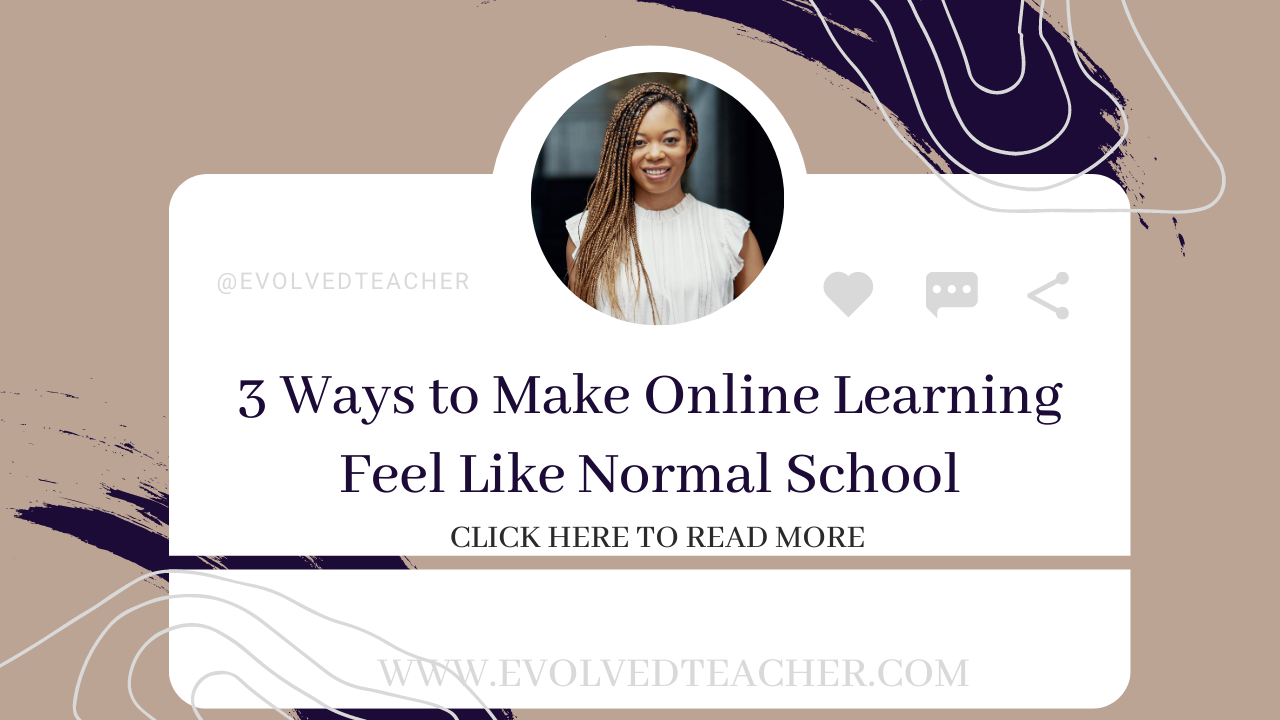3 Ways to Make Online Learning Feel like “Normal” School (The Good Kind)

This is my third pandemic and each time I had such an experience, I have tried to study my students to figure out ways to make things better for them at the moment and the next time if there were to be one.
Experiencing my first pandemic was a whirlwind. It was 2009 and I’d just begun teaching in South Korea. The H1N1 virus, also known as the Swine Flu, was first detected in the United States and arrived East just before I had. By the time it reached South Korea, I’d just stepped into the classroom for the first time as a kindergarten teacher and several parents were opting out of sending their children to school. Luckily, Skype was a video conferencing tool that came in handy and thus began my very first experiences as an online educator. These experiences also served me well during the second pandemic, MERS, in 2015.
Now in my third pandemic, I use tools from each of the previous experiences to help my students, and fellow educators, thrive.
However, no matter how prepared we are, there are things that students miss about what they previously perceived as normal. Many may find this surprising, but after a few weeks of learning remotely, students often begin to realize some of the things that they actually loved about physically going to school, even if they’d once complained about having to go.
The following are the top three experiences that students miss when learning virtually, rather than in a school building, and ways to fill that void.
Unplanned/ Random Connection
We often take for granted those little moments of connection that aren’t actual parts of the curriculum. However, it’s the moments of freedom that invite random connection like, walking through the halls with other students, stopping by the restroom, chatting at one’s locker, or engaging in conversation, that are also normal parts of the school routine, that matter. Students often catch up with friends, make new friends, and observe one another in these spaces.
What you could do:
When teaching virtually, incorporate time to chat freely in your lessons. I do this by showing up ten minutes early for my lessons, staying off-camera, and sharing a welcome screen with a timer on it. Students enjoy this time to just catch up and get to know one another so much that all of my students show up early for this connection time.
A Separate Identity
It often surprises my students’ parents when I inform them that their children may have different personas at school than they do at home. That’s because school is a place where many students, especially teens, try on who and how they want to be. Some students also connect with people at school in ways that they can’t at home. Therefore, learning at home doesn’t give them an opportunity to continue exploring their identity in the same way.
What you could do:
Support their individuality. Ask what they would like to be called. Have interactive lessons that include finding out more about each individual student. In my teen classes, we have “Allow me to reintroduce myself Monday” where we all reintroduce ourselves and highlight something new or different about ourselves. We also make a promise not to judge one another based on who we were before or what we thought we knew about one another.
Structure
Many students have a love/hate relationship with structure in schools. But, in the end, it creates normalcy that they become used to. Learning at home tends to blur the lines between school and home, while also making it difficult for many students to manage their time. One of the biggest problems students face is being overwhelmed by the homework load and letting homework pile up.
What you could do:
Discuss a full schedule with your students that helps them to put their current lives into perspective. Go through a sample routine with them from morning to night and include time to do homework to demonstrate what a healthy remote learning experience would be for them. Many of their families have no idea and students are simply riding the wave.
We are currently not only teaching remotely but also within a crisis. Nothing will be perfect. However, what we can do is do our best to create a healthy and safe environment that feels as normal as possible for our students.
To Evolving,
Gahmya

